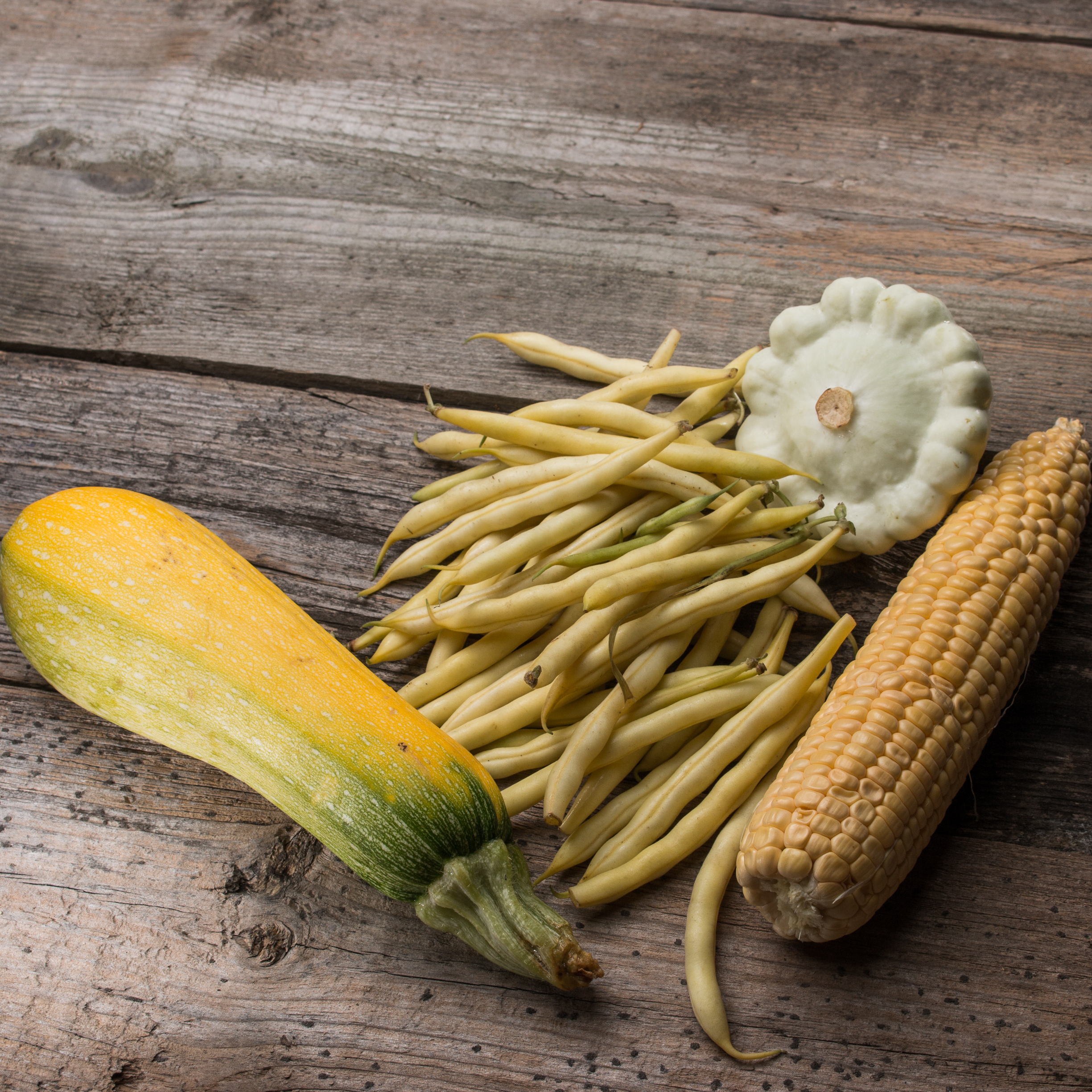GardenZeus Zone 14: 'The Three Sisters' Companion Planting in Southern California's Coastal-Influence Areas

The Three Sisters is a traditional Native American agricultural grouping that includes corn, beans, and squash, with corn providing a natural trellis for beans and vining squash, beans fixing soil nitrogen theoretically to the benefit of all three crops, and squash providing a living mulch with large leaves that cool the soil and discourage weeds.
While a difficult-to-impossible combination in warmer areas of Southern California, the Three Sisters can work in your zone, with caveats: leaf mildews may tend to run rampant in close plant spacings in your zone, so leave extra space between plants for air circulation; and beans will tend to weaken and stop producing after the full heat of summer arrives in your zone.
Zucchini and other summer squash seed varieties sold in the United States generally are not vining plants, and rarely grow in a spreading form with the long vines that are common with winter squash. Many varieties of summer squash, particularly zucchini, produce dense, bushy, compact plants that may simply crowd out bean plants or even corn.
With the vigorous growth, long vines, and sprawling habit of many winter-squash and pumpkin varieties, smaller nearby plants may simply be overwhelmed, covered, and starved as a result of blocked sunlight. As a general rule, GardenZeus expert Darren Butler recommends against interplanting, period, for larger vining varieties of winter squash and pumpkins. For purposes of The Three Sisters, these varieties should only be planted with very tall or giant varieties of corn.
Beans and other nitrogen-fixing legumes use most of the nitrogen they fix, so unless you cut bean plants at soil level before harvest, there may be little nitrogen benefit to corn and squash. Soil nitrogen fixed by beans may be available only to crops that are planted afterward, not for current companions.